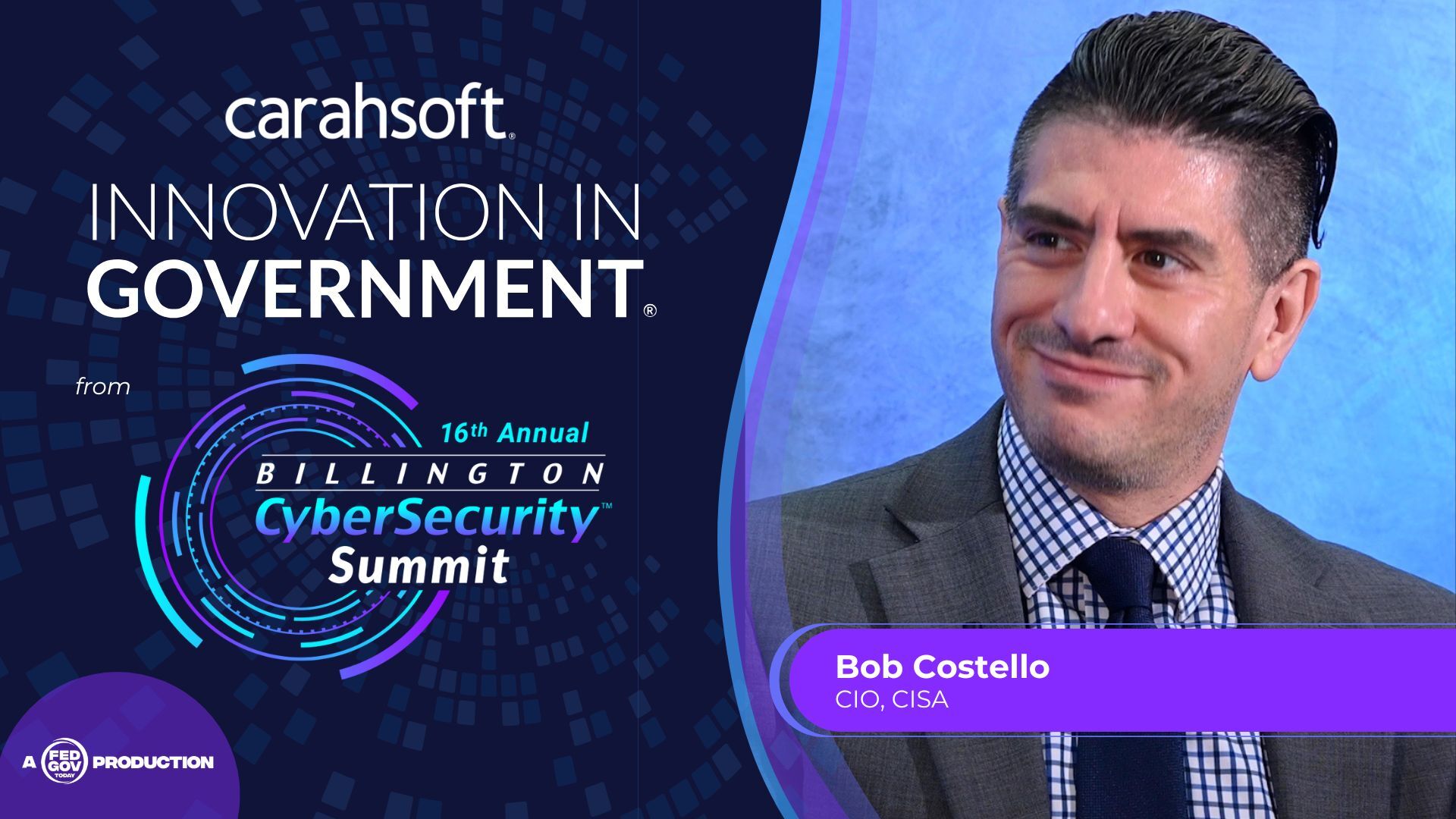Original Broadcast 10/1/25
Presented by Carahsoft
At the Billington CyberSecurity Conference in Washington, DC, Alex Whitworth, Cybersecurity Solutions Executive at Carahsoft, shed light on how emerging technologies are reshaping the future of cybersecurity in the federal government. Drawing from his unique vantage point of working both with innovative startups and established partners, Whitworth outlined the opportunities, challenges, and cultural shifts that are driving faster adoption of cutting-edge solutions across government.
Whitworth began by focusing on artificial intelligence, which he described as reaching a pivotal moment in its integration with cybersecurity. More specifically, he emphasized the growing importance of “agentic AI” — autonomous systems capable of identifying, analyzing, and responding to incidents without constant human oversight. The concept of a self-healing network, once viewed as aspirational, is now within reach thanks to AI agents that can collaborate with one another to remediate vulnerabilities and stop attacks in real time. For government agencies managing vast, complex IT environments, this type of automation could prove transformative.
 He pointed to the software supply chain as a prime example of where agentic AI could have an immediate impact. Traditionally, safeguarding code bases across large enterprises has required substantial human labor. But with agentic AI, organizations could soon deploy automated systems that scan for vulnerabilities, recommend mitigations, and even apply patches with minimal intervention. This not only speeds up remediation but also reduces the margin of human error. By allowing machines to handle routine but critical tasks, cybersecurity professionals can focus on higher-level analysis and strategy.
He pointed to the software supply chain as a prime example of where agentic AI could have an immediate impact. Traditionally, safeguarding code bases across large enterprises has required substantial human labor. But with agentic AI, organizations could soon deploy automated systems that scan for vulnerabilities, recommend mitigations, and even apply patches with minimal intervention. This not only speeds up remediation but also reduces the margin of human error. By allowing machines to handle routine but critical tasks, cybersecurity professionals can focus on higher-level analysis and strategy.
Beyond AI, Whitworth highlighted advances in ransomware defense and security awareness training as key areas where emerging technologies are making a difference. New tools, for example, can detect ransomware in its early stages, protect critical assets by hiding them from attackers, and even trick malicious software into believing it has succeeded when it has not. Meanwhile, awareness training platforms are incorporating AI to help employees recognize deepfakes, phishing campaigns, and other evolving threats. These innovations are not simply incremental improvements; they represent new categories of defense that can help government agencies stay one step ahead of adversaries.
Whitworth also discussed the cultural and structural barriers that have historically slowed the adoption of new technology in government. Procurement cycles, compliance requirements, and risk-averse mindsets have often kept cutting-edge tools out of agencies’ hands. But he sees meaningful progress in this area. Initiatives such as FedRAMP 20x, Commercial Solutions Openings (CSOs), and Other Transaction Authorities (OTAs) are streamlining acquisition, while cloud service provider marketplaces offer faster paths for vendors to bring solutions to government. These channels are not only accelerating adoption but also signaling a broader commitment to innovation.
The venture capital and private equity communities are also playing a larger role in this shift. Whitworth explained that investors are increasingly encouraging their portfolio companies to prioritize public sector markets earlier in their lifecycle, rather than waiting until they have saturated commercial opportunities. This represents a cultural change: rather than treating government as a difficult secondary market, companies are now building federal practices at the outset. For government buyers, this means earlier access to advanced technologies and more vendors attuned to federal requirements.
For federal professionals on the front lines, Whitworth stressed that the difference is tangible. By reducing barriers to entry and integrating compliance into the procurement process, agencies can access best-in-class solutions sooner. This allows them to counter fast-moving threats with equally agile technologies. Ultimately, the goal is to ensure that government has the same — or better — capabilities as the private sector, particularly in areas where adversaries are investing heavily in offensive cyber operations.
While enthusiasm for new technologies is strong, Whitworth underscored that trust remains critical. Deploying AI agents and novel defensive systems at scale requires rigorous testing in real-world environments. Agencies must balance innovation with caution, ensuring that new tools deliver reliable outcomes and do not inadvertently create new vulnerabilities. Building this trust will take time, but Whitworth is confident that as successes accumulate, confidence in these technologies will grow.
In closing, Whitworth offered a vision of a future where barriers between innovation and government adoption are minimized. By embracing agentic AI, advanced ransomware defenses, and smarter training platforms, agencies can leap forward in their ability to defend networks and protect citizens. And by fostering a culture of early engagement with venture-backed firms, the government ensures that it remains a first mover, not a laggard, in the cyber arms race.
Key Takeaways
-
Agentic AI has the potential to deliver self-healing networks and automated supply chain protection.
-
Emerging technologies in ransomware defense and awareness training are transforming cyber resilience.
-
Cultural and procurement shifts are enabling government to adopt innovative tools more quickly.



.png)